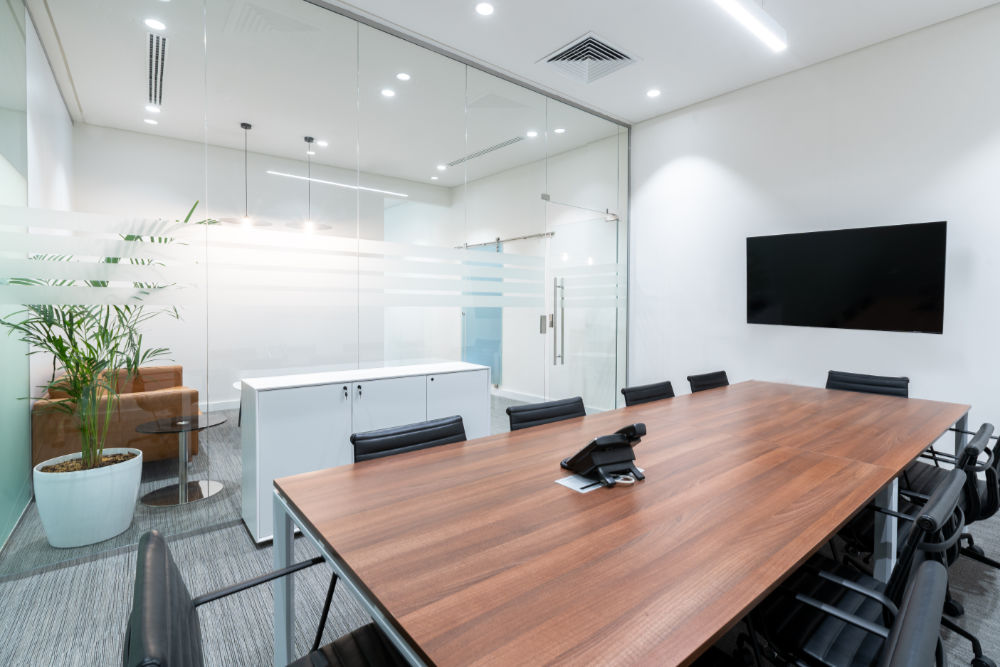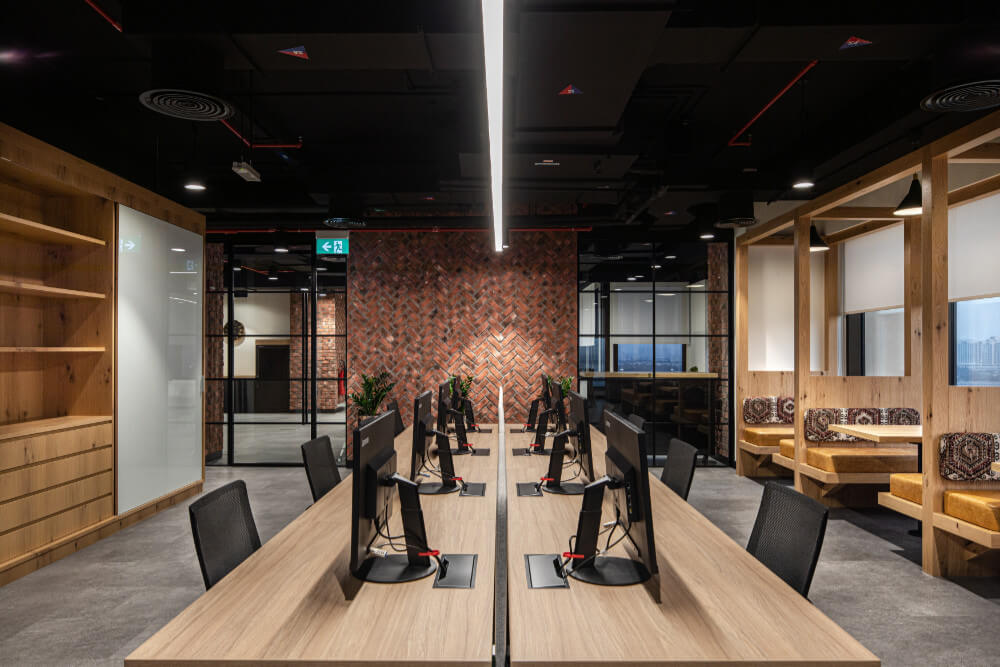The onset of the pandemic combined with the introduction of remote or hybrid workspace setups has given individuals and businesses a brand-new look into what an office space could look like. As a result, it has become increasingly important for companies to facilitate the smooth interaction and integration of both physical and virtual environments into one space. This is where the concept of a phygital workplace comes in. The phygital experience connects both the physical and digital worlds to create an enhanced experience for both employees and companies. By creating a unique way of interaction, the phygital concept bridges the gap between the online and offline spheres. In this article, we explore what it means for an office to go phygital, and why it has become an irreplaceable part of Office interior design.
What a Phygital Workplace Entails
As defined above, a phygital workplace generally refers to an environment where both offline (or physical) and online (or digital) environments co-exist. Pre-pandemic, the office space was generally associated with the physical presence of employees, with most if not all work being done within the office workspace. However, with the introduction of hybrid and remote teams, a new task of managing both in-office and out-of-office teams has emerged. Businesses now have to learn how to implement their work-based strategies to enable these mixed teams to work effectively and seamlessly. The predominant work style involved with a phygital environment is interlinked with a hybrid style of working. This means that while individuals may work in an office, its role has changed from being a place where employees have access to documents and do specific tasks to one that merely enables them to work towards their desired goals. Everything work-related can be accessed on the cloud, relegating the office space to being a tool to achieve increased efficiency through effective interior fit outs.

Why are Phygital Workspaces Important
A phygital workplace isn’t necessarily a fixed place within an office, it is rather a concept that influences how an office functions. It takes the best aspects of both the physical and digital spaces to give employees the tools needed to succeed with ease. The current progression of technology has made it so that most work-related tasks can be completed online. Employees have realized that the workplace, as it was pre-pandemic with the technology available being obsolete, is not equipped to handle their needs. If employees can complete all their tasks online, it becomes the role of organizations to ensure that the right physical environment is provided so that they can be comfortable and efficient while at the office.
Employees have become accustomed to the freedom and flexibility that comes with working from home, which makes it important for offices to try and translate those comforts into the workplace. This process generally involves interior designing and creating adaptive spaces that can account for privacy as well as group-based collaborations. Such spaces facilitate the link between the real and virtual worlds through online connectivity and integration and create an environment that promotes the health and well-being of the employees in the short and long term.
Some of the ways businesses can incorporate these aspects include:
- Using innovative technologies to reduce touchpoints (like door handles) and save energy through adaptable temperature and lighting controls.
- Incorporating flexible furniture that can facilitate different types of work needs on a need-based and ergonomic front.
- Connectivity throughout the office, from individual workstations to conference and meeting rooms.
- Inclusive access to washrooms and other facilities
- Touchless technology and sanitation points throughout the office space.


A phygital workplace is synonymous with flexibility, and creating a space that incorporates this aspect helps support the individual needs of employees as well as their needs as a group. For the better part of the past two years, most of us have worked in a bubble. The lines between work and home have blurred, and comfort has become an irreplaceable factor when it comes to productivity in the workplace. While offices can’t necessarily fully replicate the comfort of their employees’ homes, they can do their best to address these needs and create a space that puts their digital and physical needs first, making them feel comfortable and secure in their environment. Merging the right digital tools into the office can encourage employees to come more often and drive them to be the best versions of themselves with ease.

